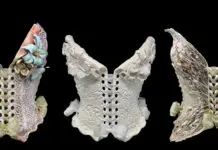The best beautification is the long-lasting kind that goes far beyond mere aesthetics, and Phil Lakin has proven that in spades. As CEO of the Tulsa Community Foundation, he has helped take the city he loves to new heights, working tirelessly to not only beautify the streets and build community gathering spaces, but also to expand economic possibilities, improve on early childhood education and encourage giving on every level. Lakin also serves as Tulsa City Councilor for District 8.
What is it about Tulsa that you love so much?
There’s a very specific, humbling trait about Tulsa that I think defines who we are, and that’s the generosity of our people. We’ve been able to demonstrate that generosity through our charitable contributions, from the United Way through nonprofits all across the city, including the Tulsa Community Foundation. We’ve only been organized for 14 years, but we are the largest of our kind in the nation. There are community foundations in places like New York and California that aren’t even close to our size, and they’ve been operational since the early 1900s. So we’ve done very well from that standpoint.
What are some of the factors that go into creating such a fine-tuned machine?
The great thing is that we didn’t invent the generosity here, but we know we have to work to preserve it. One of the roles of our city is to preserve what is sacred. When a new company comes here, they understand that it’s their role and responsibility to support others – and to give to the United Way and the Foundation – and if they don’t know it, they figure it out pretty fast. It happens like that for people, too; they see what other people are doing and it becomes the norm, and they understand how it benefits their neighbors and their city.
It sounds like a giant family mindset.
It really is. It goes beyond community. Tulsa has the overall feeling that everyone is taking care of each other. It’s a big city, but it has a small town feel.
What would you say might be the Foundation’s crown jewel?
As a foundation, one of our goals is to help those that are disadvantaged, and one of the most important things we’ve helped to facilitate is the Educare program for our youngest children. Tulsa is home to three state-of-the-art Educare schools, more than any city in the nation. These help to get kids out of the cycle of poverty so that they can find their way through the American system on their own later in life.
Another big thing that we’ve collectively done – with the Kaiser Foundation – is purchased the bonds that made the building of the ONEOK baseball stadium possible. The stadium has served as the catalyst for a lot of the transformation in the Brady and Greenwood districts. Museums, economic development, arts, culture and gathering places like Guthrie Green are all playing out in one area. It’s really become the Tulsa community’s gathering spot.
Why do you think community gathering places like Guthrie Green are so important to Tulsa? How have you seen it affect and transform the energy of the city?
Community gathering is a primary motivation for us. Across the city, we have various isolated areas with different groups of people, but these gathering places we are creating really blow down barriers and allow us to all be Tulsans together. Spaces like parks and the stadium draw people from all walks of life. They help to foster opportunity to interact with more people from across the social spectrum and better understand them.

























